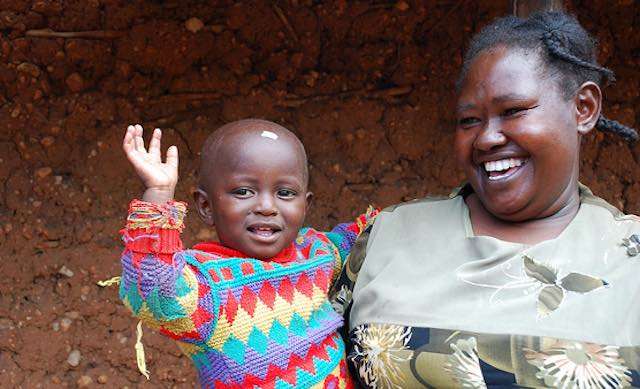City is Converting Highway Pillars into Vertical Gardens to Clean the Air
The project hopes to convert at least 1,000 of these bland-looking highway pillars into gorgeous green air pockets throughout the city.

Fewer and fewer women are dying from childbirth than ever before - but the declining mortality rate is most notable in India.
The World Health Organization (WHO) released a new report on the country's "groundbreaking progress" in decreasing the maternal mortality ratio (MMR). According to the article, India's MMR has fallen by roughly 77% over the last two and a half decades. This translates to 130 deaths per 100,000 live births in 2016, as compared to the whopping 556 deaths per 100,000 live births from the 90s.
There are a host of factors that have contributed to the exciting decline - but the most fascinating approach to preventing maternal mortality is the outreach work being facilitated by international nonprofit Save The Women.
The organization's outreach work has had the most notable success in the village of Purabgaon, in the Amethi district of Uttar Pradesh. The region used to experience the highest rate of maternity death in the world, largely because village women had poor diets and high rates of anemia. Save the Women started training and deploying teams of 20 village women who would then educate their own communities on reproductive health.
One such team leader told The Guardian that she has had great success in her outreach by changing the lyrics of romantic folk songs to reflect facts about nutrition, breastfeeding, birth control, and maternal health care.
Since Save The Women has expanded their efforts to over 1,100 villages across India, their collective maternal mortality rate has fallen by a staggering 90%, with infant mortality down by 60% as well.
The village of Purabgaon has not experienced a single maternal death, which is reflected in the sign that they have hanging in the community reading, "We no longer die in childbirth."
The Indian government has taken several other legislative steps to protect their mothers, too - there is now more coverage of maternal health and pregnancy services than ever before, which has led to three times as many deliveries in public health institutions, rather than home births. Additionally, the state now funds free transportation and on-site delivery resources, which closes the gap between rural and urban pregnancies.
Social factors, such as literacy and female empowerment, have also accounted for how women approach their pregnancies and health choices.
Collectively, WHO says that these preventable measures have brought the MMR "below the Millennium Development Goal (MDG) target and puts the country on track to achieve the Sustainable Development Goal (SDG) target of an MMR below 70 by 2030."
Be Sure And Share The Exciting New Trend With Your Friends - Photo by CIMMYT, CC
Be the first to comment